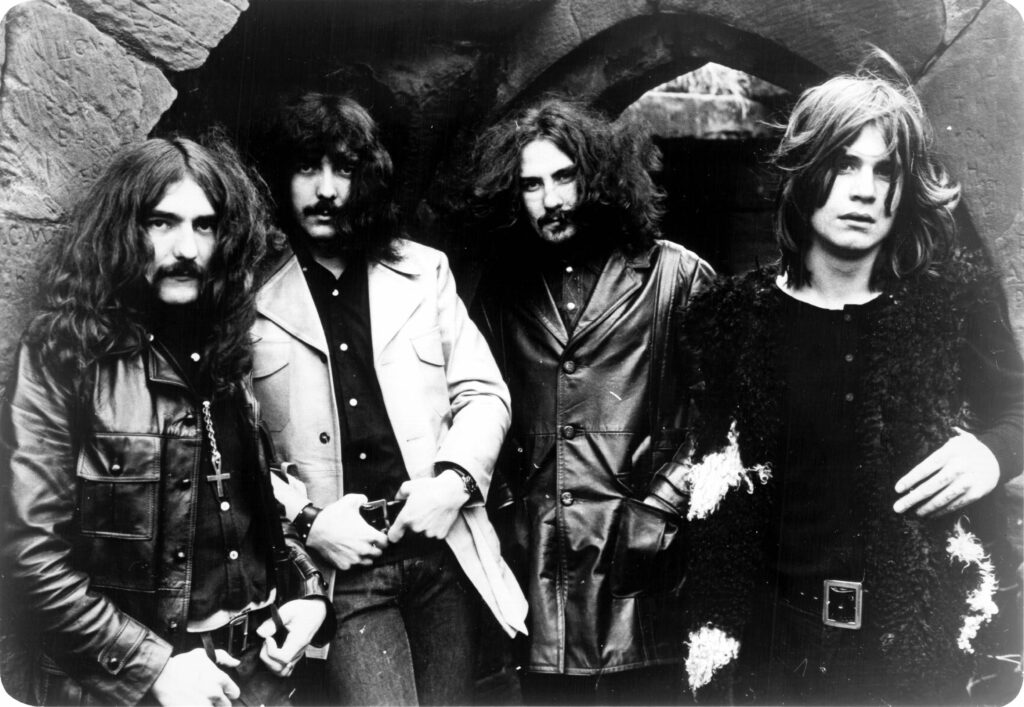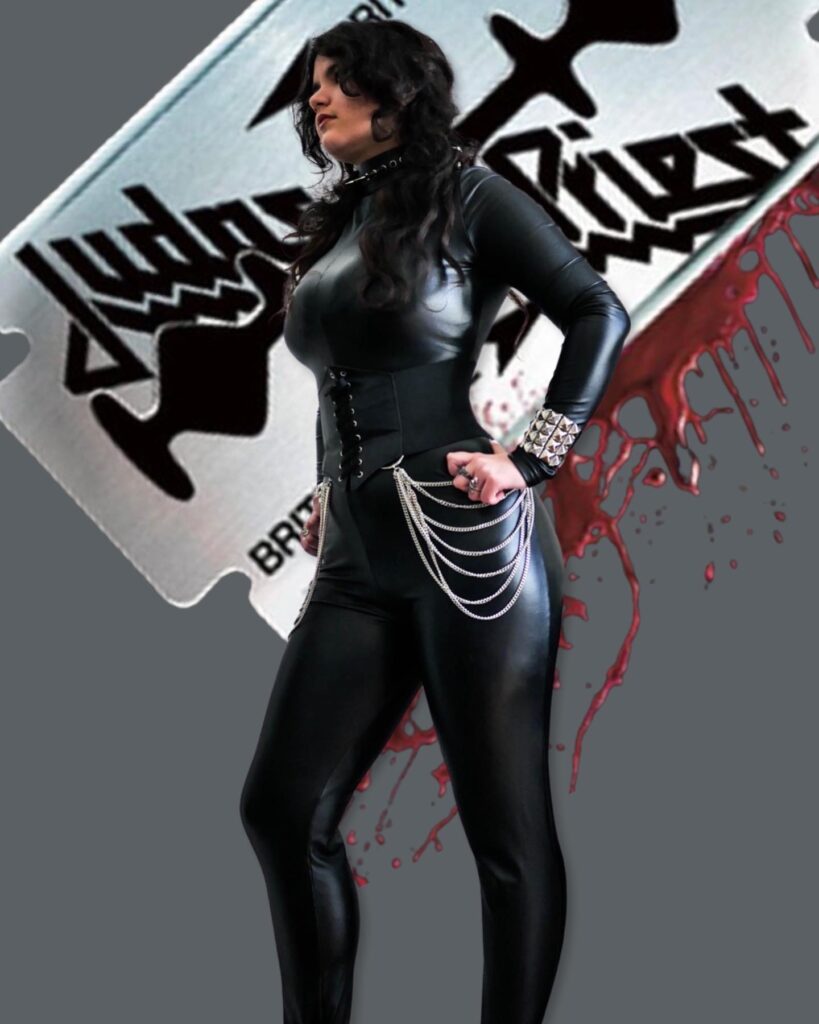Origins of Heavy Metal
Music has always been malleable throughout history, shaping itself according to what people are going through and what they desire. Heavy Metal was no different. With the influence of bands like Black Sabbath, Led Zeppelin and Deep Purple (AKA ‘”The Unholy Trinity” of British Hard Rock), Heavy Metal laid its roots in elaborated guitar riffs, hard-hitting drums, and controversial anti-cultural themes like aggression, darkness, politics, human nature and an overall new musical structure and identity were the quintessential roots of Metal.

Technically, Black Sabbath isn’t Metal, but I consider Black Sabbath like the “wizard who cast the Metal Spell” and “Children of the Grave” the first Metal song. The first real Heavy Metal band was Judas Priest.
The bands who were the architects of Heavy Metal developed a massive, full-bodied sound characterized by a saturated, distorted amplifier timbre, low guitar strings to create riffs, and the exploration of lower-toned sonorities, giving a sombre air to the music. The electric guitar is the backbone of Metal.
Allmusic states, “Among all rock ‘n’ roll formats, Heavy Metal is the most extreme form in volume, intensity and theatricality.”
Master of Reality was released in 1971, shortly after the first Judas Priest album was released in 1974, and from this point, other bands were created, like Iron Maiden formed in 1975. It was the birth of the “New Wave of British Heavy Metal” or the N.W.O.B.H.M,
Unlike Baby Boomers, who benefited from the post-WWII economic boom in the US, GenX-ers faced a tough economy during their youth in the US and UK. Economic depression leading to domestic instability characterized their childhood.
The N.W.O.B.H.M was the next step after the influence of the “Unholy Trinity” and a natural course of evolution like confirming a desire to go above and beyond the limits, allowing youth to express their feelings, fears and desires, whatever they could be.
The big names like Iron Maiden and Motorhead put forth the initial tide of the N.W.O.B.H.M.
Harmonized guitars, upbeat drums, and offbeat themes defined them.
By then, a real Metal community was born. When we have Metal “Gods” and “idols” producing such avant-garde inspirational music, the new generations yearned for their turn to express themselves using all they learned with old masters.

After nearly a decade of increasingly heavier sounds, something new was being cooked. The genre morphed into something else in North America, providing a new feel and message. Young bands with boiling blood and a thirst for controversy. An angry youth who had something to say. The Thrash Metal movement was a new genre that would dominate the 80s.
The dissatisfied youth wanted music that conveyed a message and had harsher sounds. Heavy Metal inspired several subgenres, and different clans were formed, but all shared the same love for Heavy Metal music.
High school kids meet every evening in a garage and play their hearts out. Metal became a contagious passion, and kids played each time faster, creating Thrash.
What is the Thrash sound, and how exactly did it come up? If this question lingers in your mind, then here is the answer- a consequence! In simple words, Thrash was a consequence of many aspects. Musically, the popular hardcore punk scene in LA, USA (entailing bands like Black Flag) and the N.W.O.B.H.M bands met with a wild fusion to create a fast, angry vibe in Metal music.
Culturally, this also satiated the anger of the youth due to the financial crisis and struggle during that economically difficult period. Therefore, the harsh reality, Politics, and other cultural aspects were the catalyst elements at the origin of this new musical expression.
These angry “kids” saw that such a fusion was a great way to express their emotions and beliefs and came up with the soundprint of this genre. Without diving into the technicalities, we can conclude that much experimentation with guitar tones and techniques gave Thrash its voice and identity.
At that time, the differences between Speed and Thrash Metal weren’t clear yet, but both genres grew parallel. Typical Thrash bands like Megadeth called themselves “Speed Metal” to start before a clear definition separated Speed from Thrash. Anvil and Accept are considered Speed Metal, while early Metallica, Slayer and Anthrax are Thrash.
Thrash was born in the Bay Area of San Francisco but gradually spread geographically and influenced other subgenres that followed, like Death Metal and Black Metal.
Namit Riffs and Daniela P.

Another article focused on technique and music.
Characteristics
Loud, distorted guitars, emphatic rhythms, a dense bass-and-drums sound, and vigorous vocals traditionally characterize Heavy Metal.
Metal subgenres traditionally emphasize, alter, or omit one or more of these attributes.
According to New York Times critic Jon Pareles, “In the taxonomy of popular music, Heavy Metal is the main subspecies of hard rock – the type with less syncopation, fewer blues, with more emphasis on spectacle and more brute force. The typical band lineup includes a drummer, a bassist, a base guitarist, a solo guitarist, and a singer, who may or may not also play any of the instruments. Keyboards are sometimes used to enrich the body of the sound; early Heavy Metal bands used to use a Hammond organ, while synthesizers have become more common later.
The electric guitar and its sonic power through amplifiers has historically been the key element of Heavy Metal. Guitars are often played with distortion pedals through tube amplifiers with plenty of overdrive, creating a thick, powerful, “heavy” sound. A central element of Heavy Metal is the guitar solo, a form of the cadenza. As the genre has developed, more sophisticated and complex solos and riffs have become integral to the style. Guitarists use techniques such as sweep-picking and tapping to play with more speed, and many styles of Metal emphasize displays of virtuosity. Some influential bands in the genre, such as Judas Priest and Iron Maiden, have two or even three guitarists who share both lead and lead guitar. An important feature is pentatonic scales, exemplified in bands like Led Zeppelin, Deep Purple or Black Sabbath.
The lead role of the guitar in Heavy Metal often clashes with the traditional bandleader role of the vocalist, which creates musical tension as the two “vie for dominance” in a spirit of “affectionate rivalry.
Heavy Metal “demands the subordination of the voice” to the band’s overall sound.
Reflecting Metal’s roots in the counterculture of the 1960s, an “explicit display of emotion” is demanded of the vocals as a sign of authenticity.
Critic Simon Frith claims that the “tone of voice” of the Metal singer is more important than the lyrics. Metal vocals vary enormously by style, from the theatrical approach, spanning multiple octaves, of Rob Halford of Judas Priest and Bruce Dickinson of Iron Maiden to the gruff style of Lemmy of Motörhead and James Hetfield of Metallica to the guttural howl of several Death Metal vocalists.

The prominent role of the bass is also crucial to the sound of Metal, and the interchange between bass and guitar forms a central element of the style. The bass provides the bass sound necessary to make the music “Heavy. Metal basslines vary enormously in complexity, from maintaining a simple bass pedal point to serving as a “foundation” for the guitarists, doubling complex riffs and licks along with the base and/or rhythm guitars. Some bands rely on the bass drum as a solo instrument, an approach popularized by Metallica bassist Cliff Burton in the early 1980s.
The essence of Metal drumming is to create a loud, steady beat for the band, using the “trifecta of speed, power, and precision. Metal drumming “requires an exceptional amount of stamina,” and drummer style must develop “considerable dexterity, coordination, and speed to play the complex patterns” used in metal. A characteristic technique of metal drumming is cymbal muffling, which consists of the percussion of a cymbal followed by its immediate muting through the use of the other hand (or, in some cases, the very hand that percussed it), producing a short sound emission.
The setup of Metal drums is generally much larger than that used in other forms of rock music.
In live performances, volume – “a sonic assault,” in sociologist Deena Weinstein’s description – is considered vital.
In his book Metalheads, psychologist Jeffrey Arnett refers to Heavy Metal concerts as “the sensory equivalent of war.
Soon after the first steps taken by Jimi Hendrix, Cream, and The Who, early Heavy Metal bands such as Blue Cheer set new milestones in terms of volume. According to Blue cheerleader Dickie Peterson, “all we knew was that we wanted more power. A review of a 1977 Motörhead concert recorded how “excessive volume figures particularly prominently in the band’s impact.
According to Weinstein, in the same way that melody is the main element of pop music and rhythm is the main focus of house music, powerful sound, timbre, and volume are the key elements of Metal; excessive volume would be intended to “sweep the listener into the sound” by providing them with a “dose of jovial vitality.”
Heavy Metal’s fixation with volume was satirized in the comedy documentary This Is Spinal Tap, in which a Metal guitarist claims to have modified his amplifiers to “go up to eleven.”
The rhythm in Metal songs is emphatic, with intentional accents. The range of sound effects available to Metal drummers allows the rhythmic patterns to assume great complexity while maintaining their elemental insistence and power. In a good part of the songs of this style, the main note is characterized by short, two- or three-note rhythmic figures – usually composed of eighth or sixteenth notes. These rhythmic figures are usually executed with staccato attacks created through the technique known as palm muting on the bass guitar.
Rhythm and tempo
Example of a rhythmic pattern used in Heavy Metal
Brief, abrupt, independent rhythmic cells are joined to rhythmic phrases with a distinctive, often irregular texture. These phrases are used to create a rhythmic accompaniment and melodic figures called riffs, which help create thematic hooks. Heavy Metal songs also use longer rhythmic figures, such as chords, semibreves, or with the duration of a quarter note in the so-called slower power ballads. Tempo in older heavy Metal tended to be “slow, even ponderous. By the late 1970s, however, Metal bands employed various tempos. In the 2000s, Metal tempos ranged from slow ballads (quarter note = about 60 beats per minute) to extremely fast blast beat tempos (quarter note = 350 beats per minute).
Harmony
One of the hallmarks of the style is a chord form played on the guitar, known as the power chord. In technical terms, the power chord is relatively simple: it involves only a major interval, usually the perfect fifth, although an octave can be added to double the root. Although the interval of the perfect fifth is the most common basis for the power chord, these chords can also be based on different intervals, such as the minor third, major third, perfect fourth, diminished fifth, or minor sixth. Most power chords are also played based on a finger arrangement that can easily be shifted throughout the arm’s length.
Typical harmonic structures
Heavy Metal is usually grounded in riffs created with the three main harmonic features: scales in modal progressions, tritones and chromatic progressions, and pedal points.
Traditional Heavy Metal tends to employ modal scales, particularly the Phrygian and Aeolian modes Harmonically, this means that the style usually incorporates modal chord progressions, such as the I-VI-VII, I-VII-(VI) or I-VI-IV-VII Aeolian progressions and the Phrygian progressions that involve the relationship between I and ♭II (I-♭II-I, I-♭II-III, or I-♭II-VII, for example). Tense-sounding chromatic or tritone relationships are used in several Metal chord progressions.
The tritone, a musical interval spanning three whole tones – such as C and F sharp – was a dissonance forbidden in medieval ecclesiastical chant, which caused monks to call it “Diabolus in music” – “the devil in music” in Latin. Because of this original symbolic association, the interval came to be seen in the Western cultural convention as “evil.” Heavy Metal used the tritone extensively in its guitar solos and riffs, one of the most notorious examples of which is the beginning of the song “Black Sabbath” by the band of the same name.
Songs make frequent use of the pedal point as a harmonic base. A pedal point is a tone that is sustained, typically by a bass instrument, during which the other instruments play at least one “odd” (i.e. dissonant) harmony.
